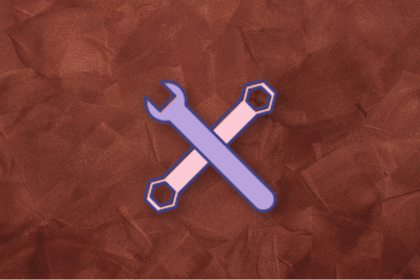In this guide, we’ll introduce you to the Pragmatic Marketing Framework. We’ll demonstrate how pragmatic marketing impacts the product development process and lifecycle and go over real-world examples to show how the methodology works in practice.

The Pragmatic Marketing Framework is an approach to product development and marketing that establishes a common vocabulary for your whole product team as well as a roadmap of the steps required to launch successful, problem-focused products.
The beauty of this approach is that it continually adapts itself based on the wants and needs of your customers. To make sure that the product is pertinent to their needs and lives up to their expectations, the marketing strategy is evaluated and revised when it is adapted.
The basic goal of pragmatic marketing is to attempt to produce things that are almost exactly as the consumer has requested. Because of this, pragmatic marketing is one of the most effective delivery methods. Pragmatic marketing involves a succession of product modifications and tests to make sure the final product will please the target market.
For an example of how the Pragmatic Marketing Framework works in practice, let’s say a smart speaker manufacturer wants to create a speaker with particular characteristics for a certain audience.
A sample of the audience would test the speaker as part of the pragmatic marketing process. The manufacturer would then modify the speaker based on feedback from that audience sample to ensure that it meets those specific consumer desires when it hits the market.
The Pragmatic Marketing Framework gives your team a common language and outlines the steps it should take to launch a successful, problem-focused solution.
Of course, just like any marketing plan, the Pragmatic Marketing Framework has some drawbacks.
Always keep these three fundamental guidelines in mind when applying the pragmatic marketing strategy:
The steps involved in pragmatic marketing are as follows:
By speaking with untapped potential customers and conducting customer interviews, it is possible to pinpoint market issues. You should prioritize the most urgent problems.
Why did recent evaluators decide to purchase (or not to purchase) the product? How did they proceed with the purchase? Learn more, then put your insights to use.
Determine whether the company can provide value to the market by evaluating it. Take the following steps:
Identify alternative products, potential substitutes, and market competitors. Consider your advantages and disadvantages against competitors in all three categories.
Identify strategies to exploit all of your marketing assets.
Start by making an inventory. Among the assets you could use to spread your message are brochures, emails, social media posts, blog articles, and other marketing tools.
Pragmatic marketing always starts with determining what the customer wants. The product is then developed in accordance with consumer needs, tested repeatedly, and, finally, produced.
Below are four examples of Pragmatic Framework-based product testing:
There is no such thing as pragmatic marketing when it comes to convincing customers that your product addresses their needs without actually getting their input.
Pragmatic marketing focuses on developing a product that meets the needs of the market and then actually launching a product that consumers want as a result.
Even after the initial launch, pragmatic product developers and marketers continue to test and refine the product to make sure it satisfies customer needs. They are focused on designing a product that is centered on the needs of the client and then enhancing it over time to extend the product lifecycle.
Steps to implement this approach are as follows:
The ideal time to introduce your product to the market is when consumer curiosity is at its highest. Create a diversion in case distractions occur so you can choose the best time to introduce your offering. This will turn your clients into your salespeople.
Holidays, important sporting and television events, and trade exhibitions are all ideal periods to introduce your product. You may even be able to establish regularly scheduled events for your own brand that clients look forward to and enjoy.
For example, Apple created its own kind of holiday with its yearly keynote events at which it routinely releases new products.
Many businesses use splash parties to introduce their products, followed by marketing. The fact that pragmatic marketing keeps up with the product’s lifecycle sets it apart.
Apple is a marketing pragmatist to its core (no pun intended). This extends to its usage of multiple media.
Apple’s marketing armada always generates excitement for the rumored new iPhone. Customers know exactly what to expect from the upcoming iPhone weeks before it is released.
Let’s continue using Apple as an example.
When the iPod was initially introduced, it was marketed through billboards and TV advertisements. Today, Apple employs these techniques to promote each new iPhone, using vivid imagery to help customers visualize its products.
To ensure that customers would appreciate its new digital music player, Apple plastered posters of people using iPods onto innumerable street walls leading up to its release.
Agile software development is quite similar to pragmatic marketing.
In both cases, you must determine what the buyer wants to purchase before testing and refining the software (or other product) until the desired outcome is achieved. Theoretically, the fundamental tenet of both strategies is that effective product presentation will boost sales.
Because the ideals of pragmatic marketing are comparable to those of agile software development, it has been widely adopted in the technology sector. Combining the two approaches, though, might provide subpar outcomes.
Agile approaches call for frequent changes to product requirements, making them suitable for handling inconsistent changes from CEOs and product managers. However, agile methodologies fall flat if the organization can’t decide what needs to be built or offer properties to rival interests.
Agile marketing can be used to create software, but it won’t result in more software sales. Agile approaches to product management enable teams to deliver products more quickly, but they may not always be things that customers want to buy.
If you’re working on a lengthy, cyclical product development process, many authors advise choosing agile development over strategies like waterfall marketing. In fact, agile marketing places a focus on long-term planning in the software development process. It aids companies in creating goods that consumers will purchase. Long-term plans, however, do not capitalize on this incrementally gathered feedback.
In any case, the product must assist the company in determining the type and price of the product to construct. Software and hardware are the focus of pragmatic marketing. Effective innovation not only takes the market’s feedback into account but also demonstrates to the market what they did not know was feasible. Take the iPhone, for instance.
Agile values and concepts are important in contributing to the success of the firm, which is why pragmatic marketing uses agile marketing techniques. With recommendations for what needs to be done, pragmatic marketing addresses the areas where agile methodologies are failing the business.
Every business that creates new goods, offers novel services, or routinely releases product upgrades employs a product roadmap. These roadmaps help internal and external stakeholders make well-informed decisions by outlining the product’s vision and strategy.
Traditional product roadmaps, however, are becoming obsolete because they fall short of illustrating the company’s intended solution to the problem. A strong plan must identify the precise issue that needs to be solved and establish why prospects, customers, and the market should be concerned.
Pragmatic marketing is a more detailed approach that makes sure that every stage of the product development cycle is covered. To provide the greatest solution to the market, you must acquire all the high-level information you require from clients.
Featured image source: IconScout
LogRocket identifies friction points in the user experience so you can make informed decisions about product and design changes that must happen to hit your goals.
With LogRocket, you can understand the scope of the issues affecting your product and prioritize the changes that need to be made. LogRocket simplifies workflows by allowing Engineering, Product, UX, and Design teams to work from the same data as you, eliminating any confusion about what needs to be done.
Get your teams on the same page — try LogRocket today.

Trey Courtney talks about his process for evaluating partnerships or acquisitions and how he successfully implements these initiatives.

Asma Syeda shares the importance of responsible AI and best practices for companies to ensure their AI technology remains ethical.

What hard skills do PMs need in 2025? Learn how AI tools can help you level up in SQL, Figma, A/B testing, and more.

Paul Weston talks about “quantifying the unquantifiable,” i.e., bringing in objective data for things that otherwise seem hard to measure.